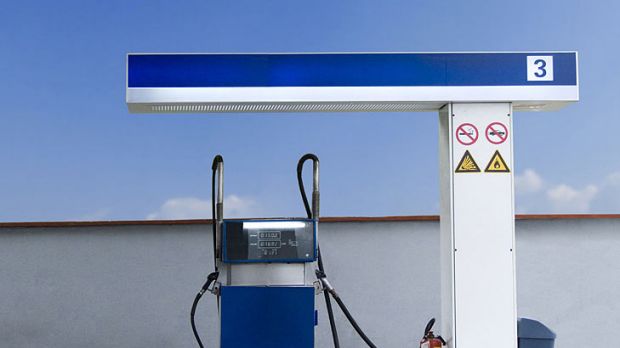OPEC members cut down production by over 1.5 million barrels per day. Coming on top of that, the Trump decision to walk off Iran deal and impose sanctions, which mean that anyone having a deal with the Iranians will be ostracised and penalised by the US, is acting on global buyers from concluding fresh supply deals with that country. The oil market operators are now finding it difficult to accept oil from Iranian sources physically difficult to handle. Iran’s production had gone up substantially since the nuclear deal was concluded and it took care of the major part of rising demand. An analysis, for Different Truths.
Oil prices have started pinching as these touches the highs of some six years ago.
With the Karnataka state elections out of the way, prices for petrol and diesel have today reached the highest level ever. Depending on the metropolis where you are buying, you will pay a price of Rs 75.32 per litre to Rs 83.16 per litre.
For the last 15 days or so, the prices were held back from any hike understandably as the two national political majors were fighting out a bitter electoral battle. Now that they have disengaged, the prices have been left free to adjust. Petrol and diesel prices are re-set daily in the light of the global price of benchmark crude. Deregulation of petroleum product prices has been a major reform, which reduced a massive burden of subsidy on the Union government’s budget.
Why are these rising so fast to such dizzying heights?
A string of developments, all coming as if by a conspiracy at the same time, is pushing up global oil prices once again. The benchmark Brent crude oil traded at around $80 a barrel causing widespread consternation. USA’s decision to break up the nuclear deal with Iran and apply new sanctions on the country, the sudden unravelling of the Venezuelan economy resulting in a secular drop in its oil production and the drop in international inventories of oil came on top of the decision of the powerful oil cartel of major producers to extend production cuts have put pressure on prices.
In the midst of the oil industry upheavals, an aggravating factor has been a recent change in regulation for global shipping. Globally ships have been ordered to use only low Sulphur fuels to cause less pollution on their voyages across the seas. This will mean, according to a study by US bank Morgan Stanley, the demand for middle distillates should rise. So the major refineries, including Reliance among them, would consume more crude to produce these grades.
The current price spurt really comes from the triggers set off over two years ago when Saudi Arabia decided to cut down production and persuaded members of the powerful producers’ cartel –OPEC—to follow suit. Russia was also roped in to the decision to voluntarily cut production. Remember around that time, oil prices had drifted to unforeseen levels of below $40 per barrel in response to a situation of oversupply in the global markets.
This happened as the US producers of shale oil, a new entrant into the oil scene, had maximised their production and the country which, until then was a net importer, became a net exporter. US oil inventory had also touched historic high, exerting a downward pressure on the market.
Since then, OPEC members cut down production by over 1.5 million barrels per day. Coming on top of that, the Trump decision to walk off Iran deal and impose sanctions, which mean that anyone having a deal with the Iranians will be ostracised and penalised by the US, is acting on global buyers from concluding fresh supply deals with that country. The oil market operators are now finding it difficult to accept oil from Iranian sources physically difficult to handle. Iran’s production had gone up substantially since the nuclear deal was concluded and it took care of the major part of rising demand.
In the midst of the supply constraint, the strong growth of the global economy has kept oil demand rising. According to some reports, oil demand is now rising faster in response to robust global growth. In physical terms, what it used to take three years growth in demand, the same quantities are being demanded in two years’. This is an ideal situation for Saudi Arabia, which seeks an oil price of $80 per barrel at which price it believes that global demand would continue to rise for a long time.
The price rise could not have come at a worse time for the consumers. Most emerging countries have dismantled their fuel subsidies for oil and made the price market driven. As a result, the consumers are being forced to pay higher prices as the market swings push these up. The only hope now is that the higher price keeps hurting the consumers to the extent that demand starts softening.
None other than the International Energy Agency (IEA), which keeps monitoring the oil market and recommending steps for maintaining orderly conditions in the market, has predicted that with price crossing the $70 mark, the demand growth could start turning sluggish. It believes in its latest report that the oil price is setting a ceiling on demand in the emerging market economies which are extremely price sensitive.
Among the main points for rising demand globally, India now ranks number one. While China’s absolute volume of petroleum products consumption is huge, the marginal growth of India is outstripping all others. This is a cause of concern.
High petroleum prices are resented by people. But that is a mostly uninformed response. It is essential that there is no artificial price sop for petrol and diesel as high prices should hopefully result in depressing consumption growth. India imports 80% of the oil it consumes and when air quality is already so poor due to unrestrained growth in the burning of fossil fuel, there is no alternative to developing a low-carbon economy. This can only be reached when prices are high and at least not subsidised.
High oil demand growth is a threat to economic stability. Oil being the largest import item, the outgo on this account is skewing the external balance. Runaway rise in oil imports is a sure step towards stumbling into an external payments crisis. The latest data shows trade deficit has climbed to $157 billion in the current year (2017-18) from $105 billion in the previous year. Where do we get the foreign exchange to pay for such humongous oil consumption? It is better to be prudent and restrain burning imported oil than regret later with insolvency on external payments obligation.
Anjan Roy
©IPA Service
Photos from the Internet





 By
By

 By
By
 By
By